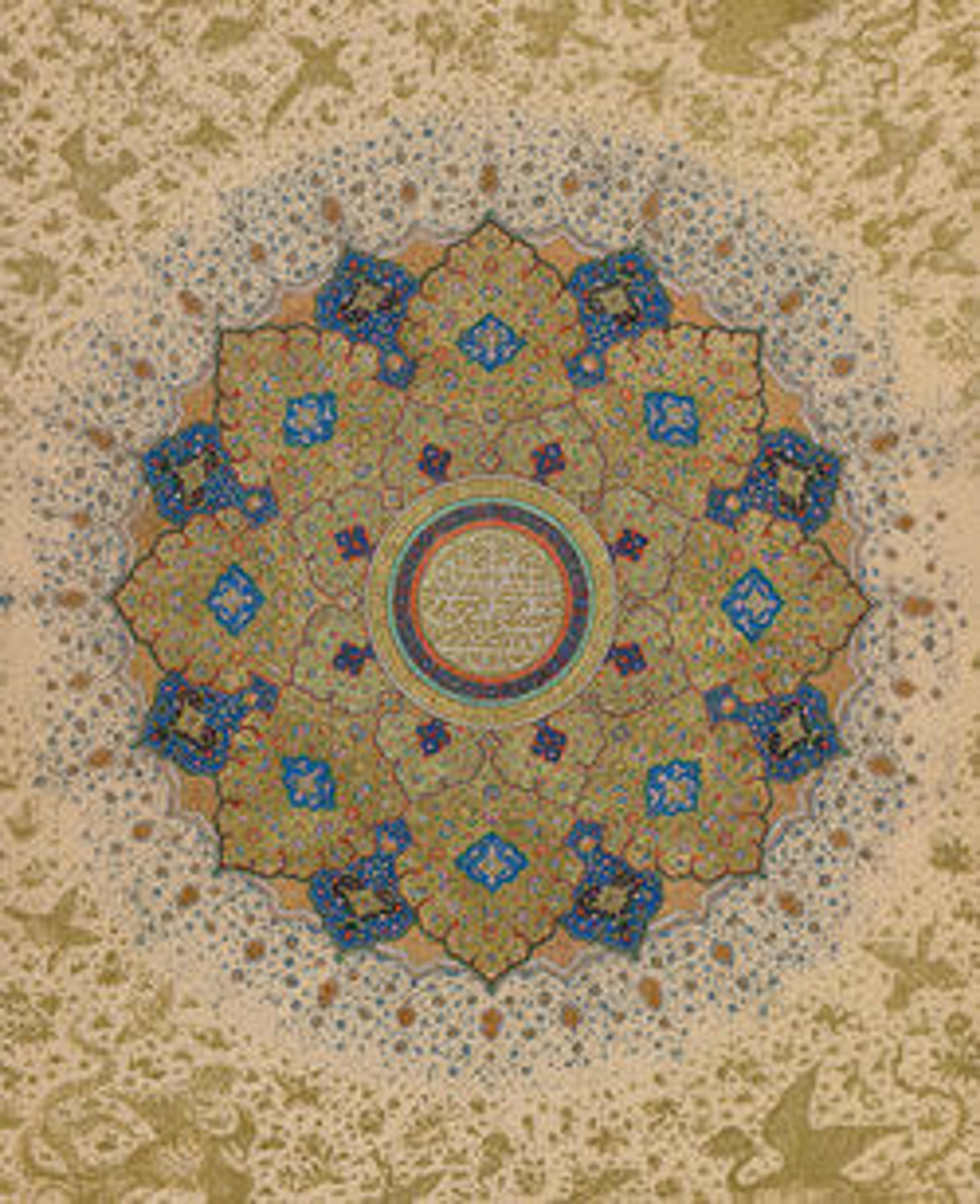Silk Kashan Carpet
This carpet, possibly woven in the silk trade and carpet manufacturing center of Kashan, has a dark blue quatrefoil medallion at its center. Decorative elements on this and other related carpets from Kashan and Tabriz indicate that weavers may have used pattern books containing popular motifs to guide them in production. These designs are also present in other media, particularly in the arts of the book. The use of metal-wrapped thread in a silk Kashani carpet of this size is unusual, but the high knot count of about 600 knots per inch may have made this expensive material worth its cost given the fine quality of the work.
Artwork Details
- Title: Silk Kashan Carpet
- Date: second half 16th century
- Geography: Made in Iran, probably Kashan
- Medium: Silk (warp, weft, and pile), metal wrapped thread; asymmetrically knotted pile
- Dimensions: Mount Dimensions: L. 105 1/2 in. (268 cm)
W. 76 1/2 in. (194.3 cm)
Weight in mount: 555 lbs (251.7 kg) - Classification: Textiles-Rugs
- Credit Line: Bequest of Benjamin Altman, 1913
- Object Number: 14.40.715
- Curatorial Department: Islamic Art
More Artwork
Research Resources
The Met provides unparalleled resources for research and welcomes an international community of students and scholars. The Met's Open Access API is where creators and researchers can connect to the The Met collection. Open Access data and public domain images are available for unrestricted commercial and noncommercial use without permission or fee.
To request images under copyright and other restrictions, please use this Image Request form.
Feedback
We continue to research and examine historical and cultural context for objects in The Met collection. If you have comments or questions about this object record, please contact us using the form below. The Museum looks forward to receiving your comments.
